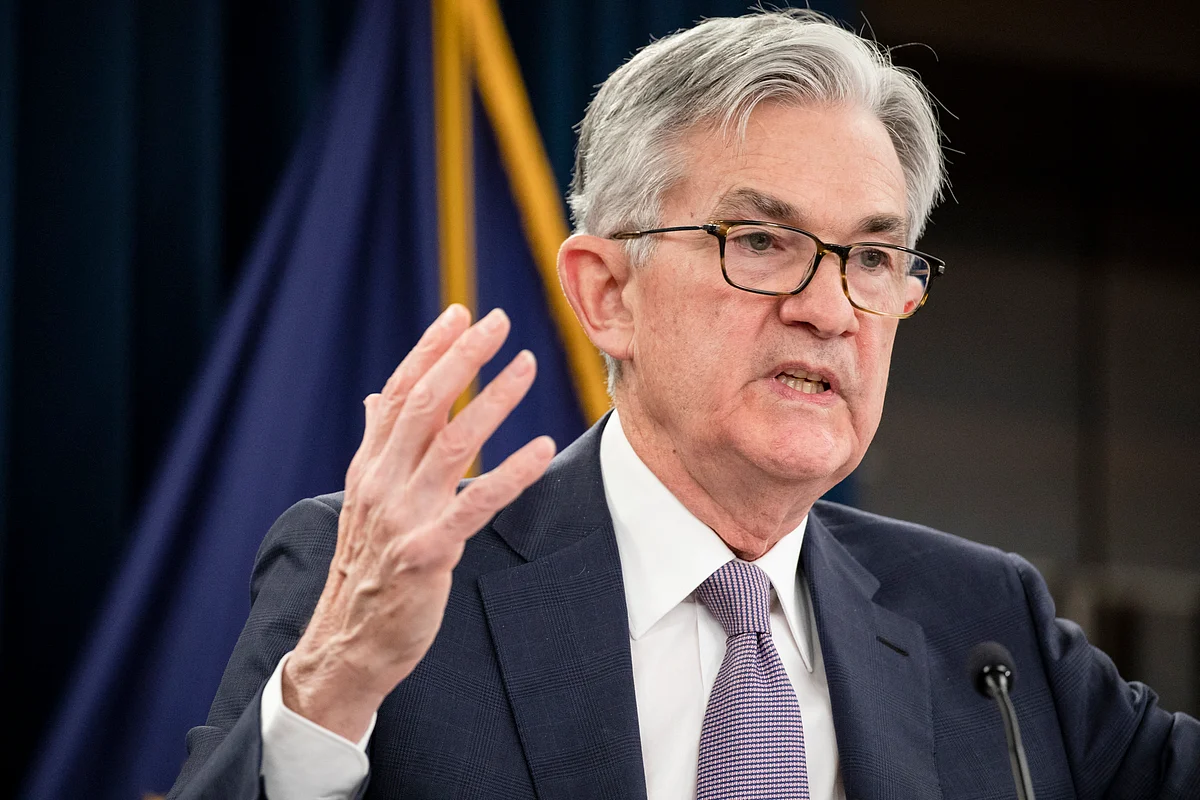Federal Reserve Chair Jerome Powell carefully opened the door to an interest-rate cut in September, pointing to rising risks for the labor market even as worries over inflation remain.
“The stability of the unemployment rate and other labour market measures allows us to proceed carefully as we consider changes to our policy stance,” Powell said in remarks prepared for the Fed’s annual conference in Jackson Hole, Wyoming on Friday.
“Nonetheless, with policy in restrictive territory, the baseline outlook and the shifting balance of risks may warrant adjusting our policy stance.”
Powell’s highly anticipated remarks didn’t appear to match the expectations of investors who are betting the Fed will deliver its first interest-rate cut of the year at the September 16-17 meeting of the Federal Open Market Committee. Ahead of Powell’s speech, investors put odds of a cut next month at about 75 per cent, according to federal funds futures contracts.
Powell said the labor market is in a “curious kind of balance” resulting from a marked slowdown in both the supply of and demand for workers. He cited employment data for July, which showed jobs growth in recent months was substantially weaker than previously reported.
“This unusual situation suggests that downside risks to employment are rising,” he said. “If those risks materialize, they can do so quickly in the form of sharply higher layoffs and rising unemployment.”
But he continued to argue that policymakers must guard against the prospect that President Donald Trump’s tariffs lead to persistent inflation. He said the effects of tariffs on consumer prices are “now clearly visible,” but it’s reasonable to expect the effects will be relatively short lived.
“It is also possible, however, that the upward pressure on prices from tariffs could spur a more lasting inflation dynamic, and that is a risk to be assessed and managed,” Powell said.
“When our goals are in tension like this, our framework calls for us to balance both sides of our dual mandate,” he added.
Treasury yields tumbled, the S&P 500 extended gains and the dollar fell. Powell was greeted in the room with a standing ovation from the audience.
Powell’s speech comes amid unprecedented pressure from Trump and his allies aimed at getting the central bank to lower borrowing costs, threatening the Fed’s independence in determining monetary policy.
Trump took his campaign to a new level on Wednesday when he called on Fed Governor Lisa Cook to resign over allegations that she provided false information in applying for two mortgages. Cook responded that she had no intention of stepping down.
Powell didn’t address the Cook affair in his remarks and wasn’t expected to take questions from the audience of central bankers and economists.
Framework changes
The Fed chair also outlined changes officials made to their monetary policy framework, the longer-term strategy that guides the Fed’s decisions.
Those changes included clarifying a shift made in 2020 that signaled officials would not lift interest rates when the unemployment rate is low to head off potential inflation.
Powell said policymakers still agree that it may not be necessary to raise rates “based solely on” their estimates for where the unemployment rate should settle over the long term. But, he added, the revision in 2020 was never intended to “permanently forswear” the ability to raise interest rates when the labor market is strong in anticipation of higher inflation.
In the changes announced Friday, officials removed wording that previously said decisions would be informed by their assessment of “shortfalls of employment from its maximum level.” They instead adopted language that more specifically states “that employment may at times run above real-time assessments of maximum employment without necessarily creating risks to price stability.”
The adjustment suggests less tolerance of a hot labor market, but keeps the Fed’s options open on how it would respond.
“Preemptive action would likely be warranted if tightness in the labor market or other factors pose risks to price stability,” he said.
Officials also reaffirmed their 2 per cent inflation goal and the importance of keeping inflation expectations anchored. But policymakers scrapped an approach unveiled in 2020 that called for tolerating above-target inflation to make up for periods of undershooting the goal. And they removed language that characterized low interest rates as a “defining feature of the economic landscape,” Powell said.
Rate debate
Powell’s remarks fall somewhere between sentiments expressed by other policymakers in recent days and weeks.
Cleveland Fed President Beth Hammack said Thursday that recent inflation data would prevent her from supporting a cut if officials were meeting this week. Her counterpart from Kansas City, Jeff Schmid, sounded similarly cautious in an interview that aired Thursday, while Atlanta Fed President Raphael Bostic said he still sees just one rate cut this year as appropriate.
Officials cut rates three times near the end of 2024, but have this year kept their benchmark unchanged. Powell and other officials have argued for a patient approach out of concern the tariffs could spur sustained inflation. Those worries were supported by recent inflation data that showed wholesale prices rose in July at the fastest pace in three years.
But several policymakers have also highlighted signs of weakness in the labor market, with some arguing explicitly that the Fed should begin lowering rates again. Fed Governors Christopher Waller and Michelle Bowman dissented against the Fed’s decision in July to leave rates unchanged, citing the labor market.
And following a surprisingly weak jobs report for July released days later, San Francisco Fed President Mary Daly and Minneapolis Fed chief Neel Kashkari signaled they might support a cut in September.
Sign up for the Daily Briefing
Get the latest news and updates straight to your inbox
Network Links
GN StoreDownload our app
© Al Nisr Publishing LLC 2025. All rights reserved.
